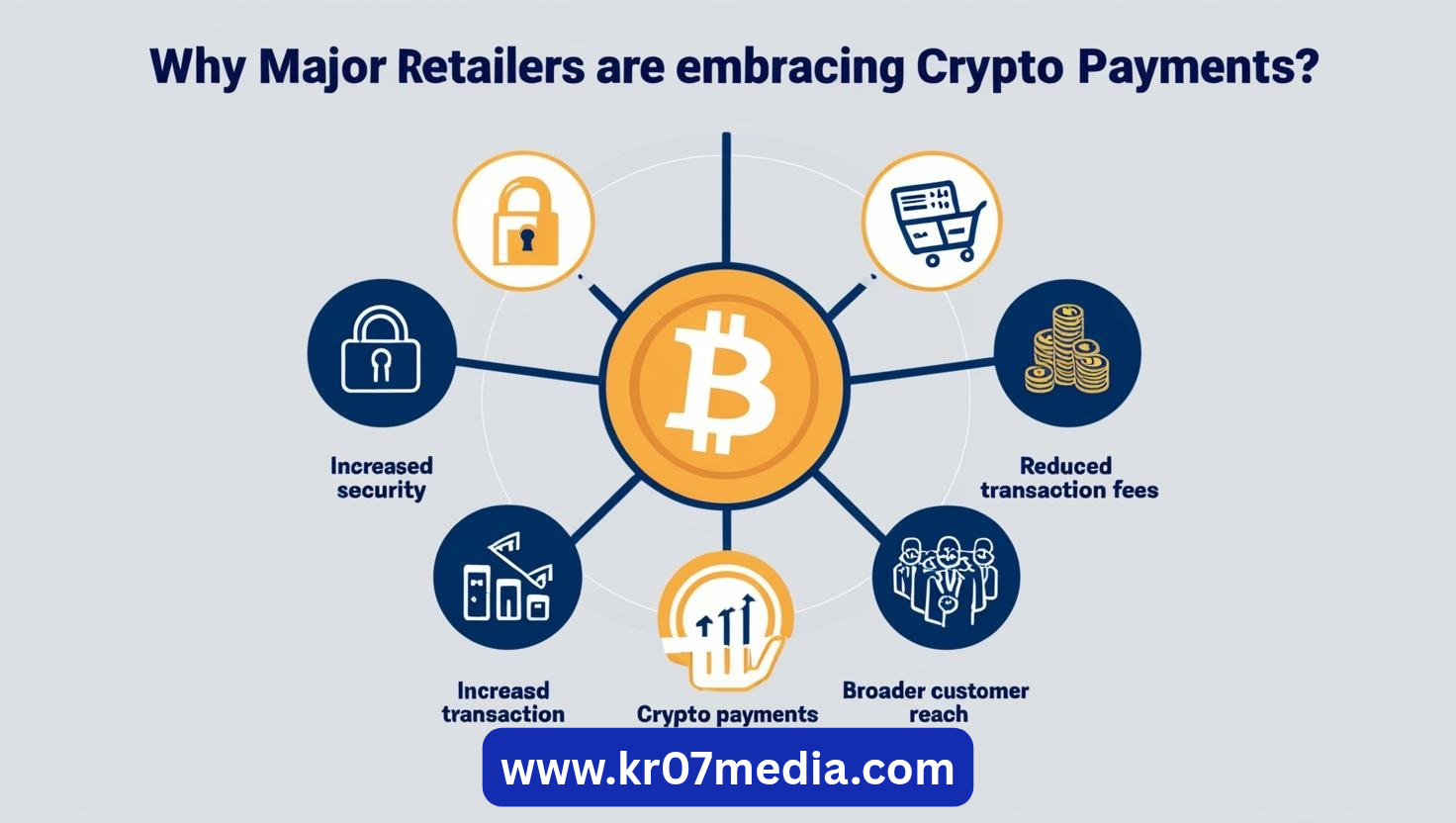In recent years, a quiet revolution has been unfolding across the global retail landscape. Major retailers—once hesitant about the volatile and complex world of cryptocurrency—are now embracing digital assets as a form of payment. From online giants like Overstock and Shopify to brick-and-mortar chains such as Starbucks and AMC Theatres, the shift signals a deeper transformation in how businesses view money, technology, and consumer behavior.
The Rise of Digital Currency in Retail
The growing adoption of cryptocurrencies like Bitcoin, Ethereum, and stablecoins by retailers reflects the maturation of the crypto ecosystem. Once considered speculative and fringe, digital assets are increasingly being seen as a viable and innovative way to transact. The global crypto payment market, projected to reach $4.5 billion by 2030, is being driven by increased demand for fast, borderless, and low-cost payment options.
Key Reasons Retailers Are Making the Shift
1. Consumer Demand and Demographics
Millennials and Gen Z consumers, who are now major economic players, are significantly more likely to own and spend cryptocurrencies. A recent survey by PYMNTS found that over 23% of millennials own crypto, and nearly half of them are interested in using it for purchases. For retailers, accommodating crypto payments is a way to attract and retain these digital-native customers.
2. Lower Transaction Fees
Traditional payment processors often charge transaction fees ranging from 2% to 4%. Crypto transactions—especially those using efficient blockchain networks—can reduce those costs significantly. For example, using the Bitcoin Lightning Network or stablecoins on blockchains like Solana or Polygon can bring transaction fees close to zero, improving margins.
3. Faster Settlements
Cryptocurrency payments can settle almost instantly or within minutes, depending on the network, compared to traditional banking systems that may take days. Faster settlements mean better cash flow for retailers and fewer issues with chargebacks and fraud.
4. Borderless Payments and Financial Inclusion
Accepting crypto allows retailers to tap into a truly global customer base without the friction of currency exchange and cross-border fees. This is particularly useful for e-commerce platforms looking to expand into emerging markets where many customers are unbanked but have access to digital wallets.
5. Brand Positioning and Innovation
Adopting crypto payments can also be a branding move. Retailers that accept cryptocurrencies are often viewed as forward-thinking, tech-savvy, and aligned with innovation. This can enhance brand loyalty and help differentiate businesses in competitive markets.
Key Players Leading the Charge
Several major retailers have already integrated crypto payments:
Overstock was one of the first major online retailers to accept Bitcoin as early as 2014.
Starbucks accepts Bitcoin payments through the Bakkt app.
AMC Theatres accepts Bitcoin, Ethereum, Litecoin, and Dogecoin for ticket purchases.
Microsoft allows users to fund their accounts with Bitcoin for purchasing games and services.
Shopify supports crypto through integrations with payment gateways like BitPay and Coinbase Commerce.
The Role of Stablecoins and Payment Processors
A major boost to crypto adoption in retail comes from the emergence of stablecoins—cryptocurrencies pegged to fiat currencies like the US dollar. Stablecoins like USDC and USDT provide price stability, making them more practical for everyday transactions.
Moreover, payment processors like BitPay, Coinbase Commerce, and Strike offer plug-and-play solutions that allow businesses to accept crypto while optionally converting it instantly to fiat, thus avoiding volatility risk.
Challenges and Concerns
Despite the momentum, challenges remain:
Volatility: Cryptocurrencies are still highly volatile, which can affect both consumers and businesses.
Regulatory Uncertainty: Governments are still developing frameworks for crypto, and sudden regulatory changes could impact adoption.
Security Risks: Wallet hacks and fraud remain concerns, though improving security measures are mitigating these risks.
Integration Complexity: For some businesses, especially smaller ones, technical integration and staff training can be barriers.
What the Future Holds
With the advancement of Web3 technologies, central bank digital currencies (CBDCs), and greater regulatory clarity on the horizon, crypto payment adoption is expected to accelerate. Retailers that move early will not only position themselves at the forefront of a financial revolution but also gain competitive advantages in efficiency, customer engagement, and global reach.
The shift toward crypto is not just a trend—it's a glimpse into the future of commerce. As trust and infrastructure improve, it’s likely that paying with cryptocurrency will become as common as using a credit card or digital wallet today.
Conclusion
Retailers are no longer asking if they should accept cryptocurrency—they're asking how soon. With benefits ranging from cost savings to global accessibility, embracing crypto payments is becoming a strategic move for future-ready businesses. In an increasingly digital economy, those who adapt to decentralized finance may well be the ones who thrive in the next era of retail.



